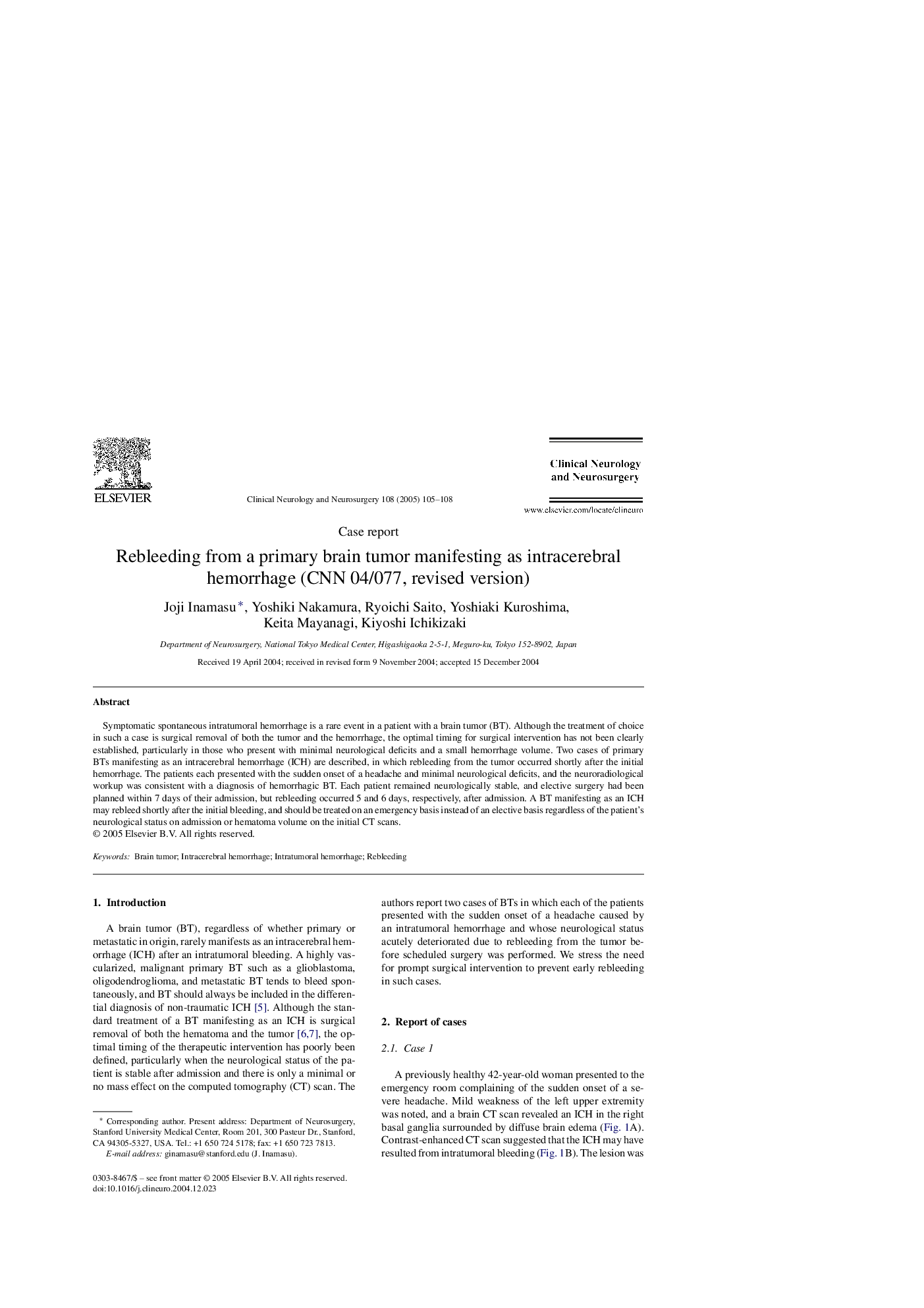| Article ID | Journal | Published Year | Pages | File Type |
|---|---|---|---|---|
| 9188202 | Clinical Neurology and Neurosurgery | 2005 | 4 Pages |
Abstract
Symptomatic spontaneous intratumoral hemorrhage is a rare event in a patient with a brain tumor (BT). Although the treatment of choice in such a case is surgical removal of both the tumor and the hemorrhage, the optimal timing for surgical intervention has not been clearly established, particularly in those who present with minimal neurological deficits and a small hemorrhage volume. Two cases of primary BTs manifesting as an intracerebral hemorrhage (ICH) are described, in which rebleeding from the tumor occurred shortly after the initial hemorrhage. The patients each presented with the sudden onset of a headache and minimal neurological deficits, and the neuroradiological workup was consistent with a diagnosis of hemorrhagic BT. Each patient remained neurologically stable, and elective surgery had been planned within 7 days of their admission, but rebleeding occurred 5 and 6 days, respectively, after admission. A BT manifesting as an ICH may rebleed shortly after the initial bleeding, and should be treated on an emergency basis instead of an elective basis regardless of the patient's neurological status on admission or hematoma volume on the initial CT scans.
Related Topics
Life Sciences
Neuroscience
Neurology
Authors
Joji Inamasu, Yoshiki Nakamura, Ryoichi Saito, Yoshiaki Kuroshima, Keita Mayanagi, Kiyoshi Ichikizaki,
